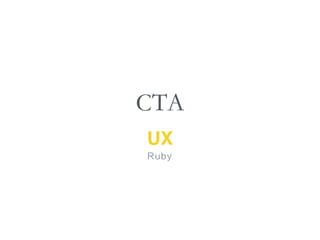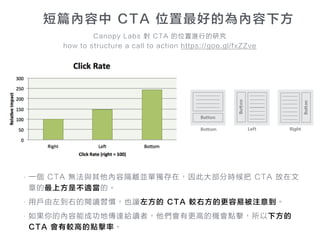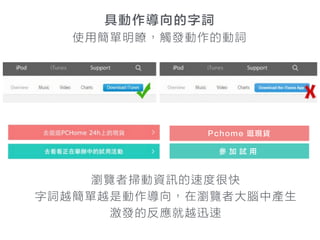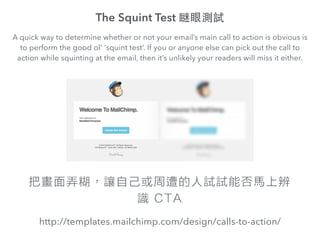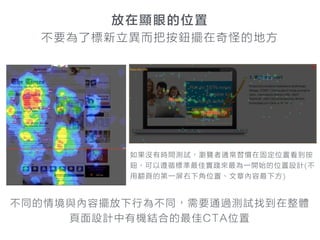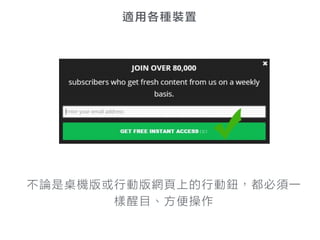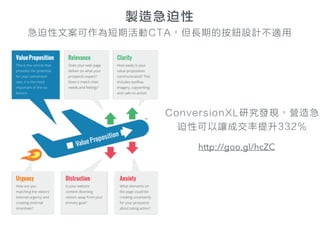CTA 設計原則
- 1. CTA UX Ruby
- 2. “What call to action is a primary thing that you want that user to do“ 「行為招喚」讓使用者做你想要他做的事 UX
- 3. 設計原則 UX Mastering The Call To Action – Words, Color, Size & Location http://conversionxl.com/everything-cta-size-location-color-works/
- 4. Canopy Labs 對 CTA 的位置進行的研究? how to structure a call to action https://goo.gl/fxZZve 短篇內容中 CTA 位置最好的為內容下方 ? 一個 CTA 無法與其他內容隔離並單獨存在,因此大部分時候把 CTA 放在文 章的最上方是不適當的。 ? 用戶由左到右的閱讀習慣,也讓左方的 CTA 較右方的更容易被注意到。 ? 如果你的內容能成功地傳達給讀者,他們會有更高的機會點擊,所以下方的 CTA 會有較高的點擊率。
- 5. 強烈對比的顏色 使用對比色或明亮顏色,讓按鈕跳脫背景色 一般網頁按鈕紅色會讓用戶緊張、 藍色讓情緒較為冷靜,所以色彩的 運用須考量其關聯性,CTA 按鈕多 半避免紅、藍這兩種顏色 現行市場測試結果中,橘黃色的CTA按鈕配以藍色背景成效最佳 Which Color Converts The Best? http://goo.gl/WpoJx
- 8. The Squint Test 瞇眼測試 http://templates.mailchimp.com/design/calls-to-action/ A quick way to determine whether or not your email’s main call to action is obvious is to perform the good ol' ‘squint test’. If you or anyone else can pick out the call to action while squinting at the email, then it’s unlikely your readers will miss it either. 把畫面弄糊,讓自己或周遭的人試試能否馬上辨 識 CTA

